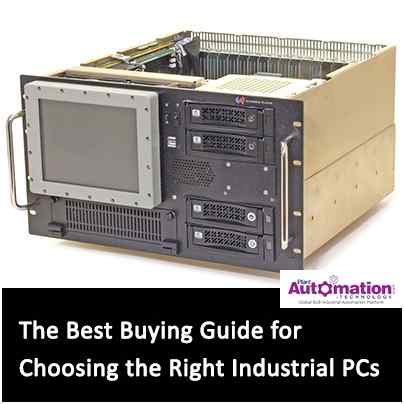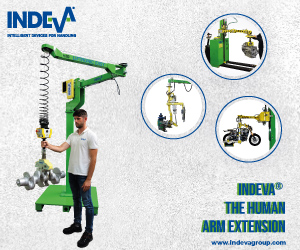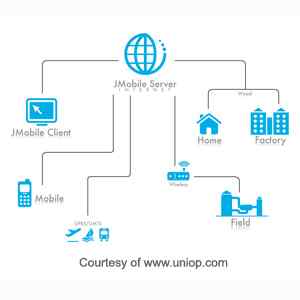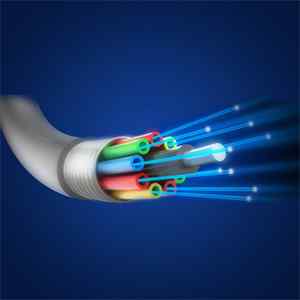Articles
The Best Buying Guide for Choosing the Right Industrial PCs

These industrial panel PCs which incorporate touch screens for better user interaction are built-in with an LCD, motherboard, and other electronic components in the same enclosure. The PC panel is utilized in manufacturing and non-manufacturing industries. These industrial PCs are used in original equipment manufacturers (OEMs), HMI, process and discrete manufacturing, smart buildings, automation systems integration, machine automation. The industrial panel PCs has become extremely necessary for both manufacturing and non-manufacturing industries for recording and controlling the industrial processes, and assisting in the optimization of the production process through appropriate data analysis. Due to the presence of several small and medium-sized manufacturers, the industrial panel PCs market is largely fragmented. Most of the international manufacturers make use of both direct sales channels and distribution channels to reach out to their customers. With regional players expanding their presence across regions, the industrial panel PCs market is likely to witness growth by international vendors through a series of mergers and acquisitions.
Things to consider before buying your PC Panel
The PC Panels combine the best of both traditional desktop computing and convenient touch screen control. Today’s PC panels provide a wide array of processing, connectivity, and mounting options making them suitable for any number of human-machine interface (HMI), automation or industrial control applications. But the production of PC panels means that selecting the right system for your particular project, as well as the environment in which it’s installed, can be quite challenging.
A) Actively Cooled or Fanless?
When it comes to environmental factors, the first thing to consider is the level of debris, dust, dirt, and other particulates that may find its way into the system during use. A fanless PC panel still maintains the benefit of removing the most common point of failure for most computers, even if the PC panel is going to be installed in a location where environmental conditions are less of a factor. However, a fanless, ventless PC panel is the ideal solution if environmental factors are a concern. These fully sealed systems prevent airborne particulate and debris from building up on internal components in addition to their lack of failure-prone fans. Moisture, debris, dust, and chemicals can all cause performance degradation and often lead to expensive maintenance downtime.
B) Capacitive or Resistive?
The industrial panel PCs comes in two different touch screen varieties – capacitive and resistive. The main difference between the two varieties is how input is detected. The capacitive touch screens utilize the disturbance in electrostatic fields caused by interaction with the screen to sense where contact is made on the touch surface, whereas the resistive screens depend on the pressure of a finger or stylus to alter the electrical resistance within the screen and indicate the contact point. In applications where detailed touch accuracy and light pressure contact sensing is of value, the capacitive touch screens are often preferred. On the other hand, resistive screens are usually preferred in industrial environments where operators may be putting on gloves, which can significantly restrain the effectiveness of capacitive screens.
C) Where will the PC panel be mounted?
Before the purchase of any industrial panel PCs, deciding on whether or not your PC panel will be fixed within another enclosure or machine, attached to a stand, or be mounted to a wall should be considered, but not once the system has arrived and is ready for installation. Choosing the correct size panel is of main concern if the PC will be embedded, whether in a kiosk, in a larger device, or any kind of enclosure. Be sure to check every dimension of the PC panel you’re considering, i.e. its depth, to avoid frustrating installation delays. There are other details of PC panel mounting that are at times less obvious to the first time buyer. You should consider a PC panel that features the option of panel mounting if your device, tooling or machinery requires a PC panel. Panel mounting allows the touch surface to mount flush to the front surface of the enclosure, unlike mounting the panel to a wall or stand. This mounting arrangement is usually popular in food production or particulate-rich environments where frequent cleaning is needed. The panel mounting not only prevents debris from collecting on the PC but also allows for the system to be easily wiped clean or sprayed down as long as it’s properly rated for protection against liquids.
D) Is the IP rating important?
Depending on the environment in which you plan to use, the IP rating of a PC panel can be a very important consideration. IP (Ingress Protection), a standard designation that shows how effective an enclosure is at sealing out ingress from both liquids and solids. The industrial panel PCs generally has IP65 or IP67 protection. The first digit in an IP rating indicates an enclosure’s ability to keep out solids ranging from the operator’s fingers to particles like debris and dust. The highest solids ingress rating is 6, showing that a system is protected even against dust particles. The second digit in an IP rating relates to the effectiveness of the enclosure in sealing out liquids. The highest rating on this scale is 8, which implies the entire case is waterproof and submersible in depths greater than 1 meter. An overall IP65 rating would indicate that the entire system, including the sides and back of the unit, will also resist ingress. A front IP rating may be all that is necessary if the PC panel will be embedded within another enclosure or panel mounted. However, a higher overall IP rating may be a necessity, if you intend to install the system as a standalone device, and the whole system is exposed to the elements.
E) What Size Panel PC Do You Need?
One advantage of a PC panel is that they come in a variety of sizes to meet virtually any situational need. When selecting the right size, you may be limited by several factors depending on your application. It’s necessary to consider whether it’ll be mounted, on an articulating arm, on a stand, or otherwise. If so, the weight of the system may also be a factor. Apart from this, the resolution of the display and how clear and large you’ll need the images on it to appear should also be considered. Be sure to consider whether the application will need a standard (4:3) or a widescreen (16:9) aspect ratio screen.
F) Do You Need a High Brightness Panel PC?
As the vast majority of consumers, and even industrial monitors and touch screens aren’t designed to emit enough light to compete with the glare of the sun, it can be extremely frustrating when the sun shines directly on a device screen. The standard screens are also subject to high glare, which can cause additional viewing restrictions. And that’s where high brightness (sunlight readable) screens come into the picture. They provide higher light output, sometimes double the nits of standard displays, and also feature special filters to reduce glare. A high brightness or sunlight-readable screen becomes a crucial consideration if you are looking into purchasing a PC panel for outdoor use or installation in an area subject to direct sunlight.
G) Do You Need a Solid State Panel PC?
Simply going fanless is not enough to ensure reliability when it comes to a rugged PC system that can handle harsh conditions or mobile installations. By replacing the spinning hard drive with solid-state storage, the solid-state systems can go one step further. With capacities ranging into multiple terabytes and prices much lower when the technology first hit the market, the solid-state storage has come a long way in just the last few years. An SSD or Solid State Drive storage is an important component to creating a truly solid-state device for the ultimate in reliability, mainly in impact prone installations or vibrations.





